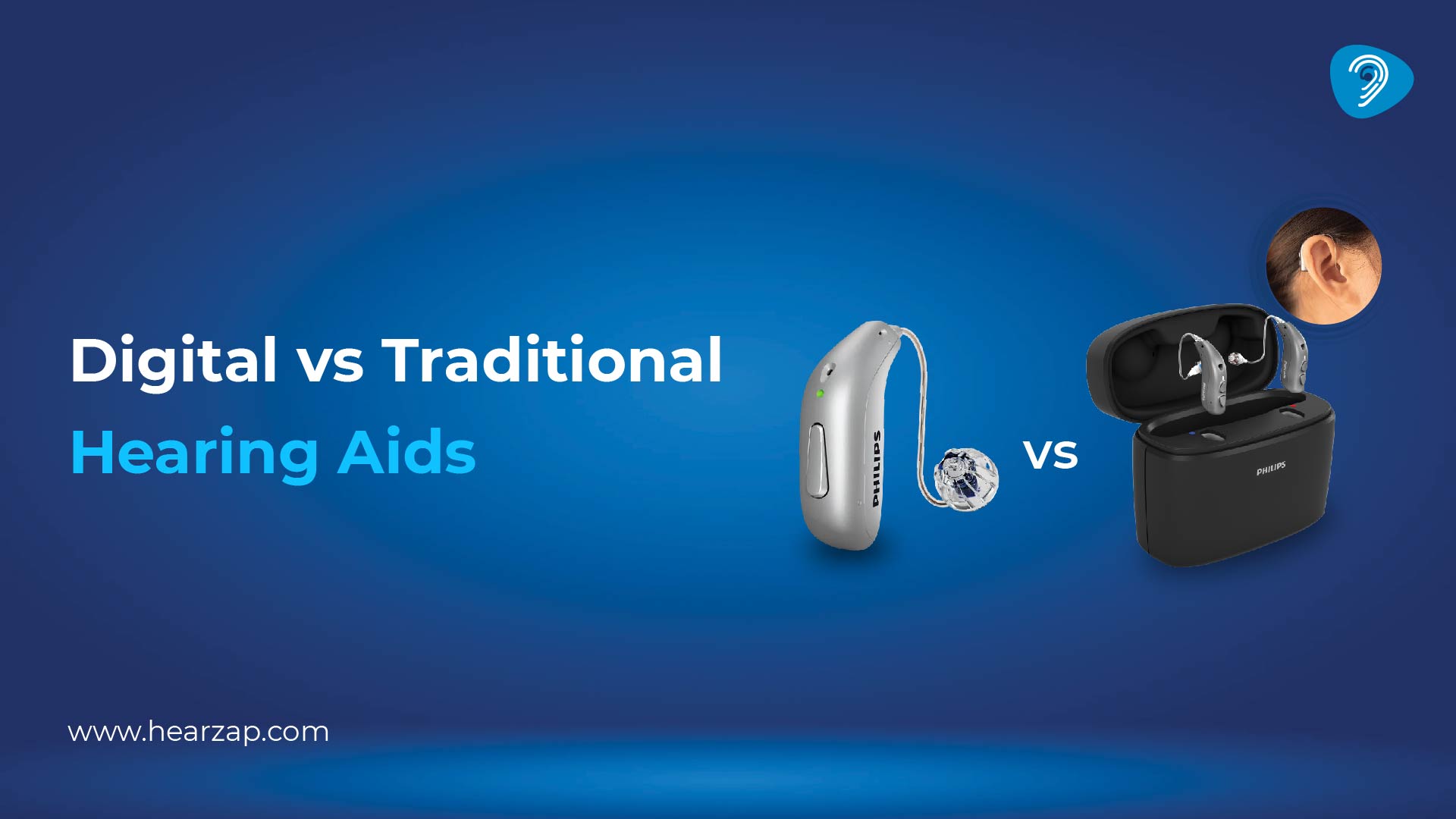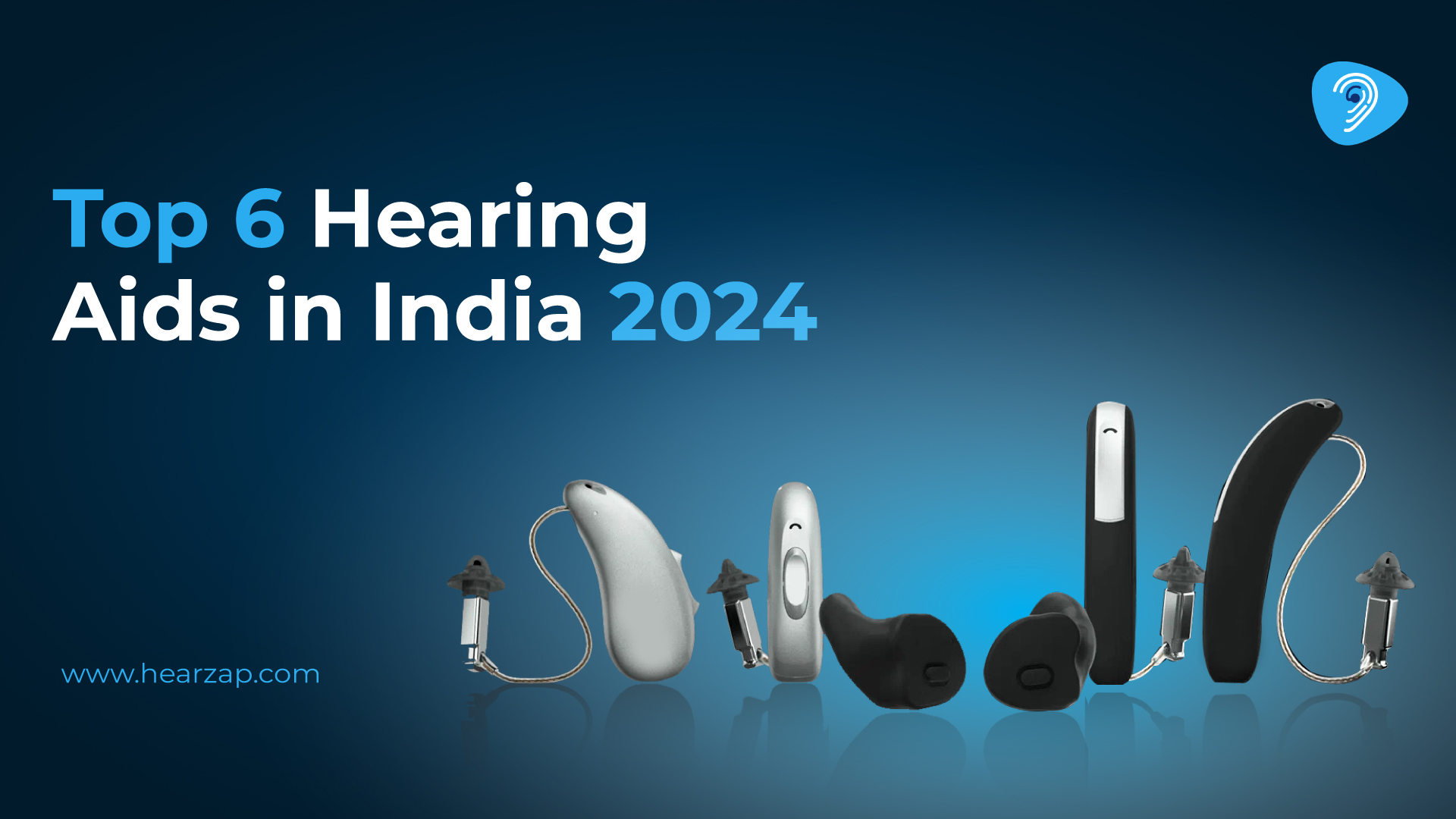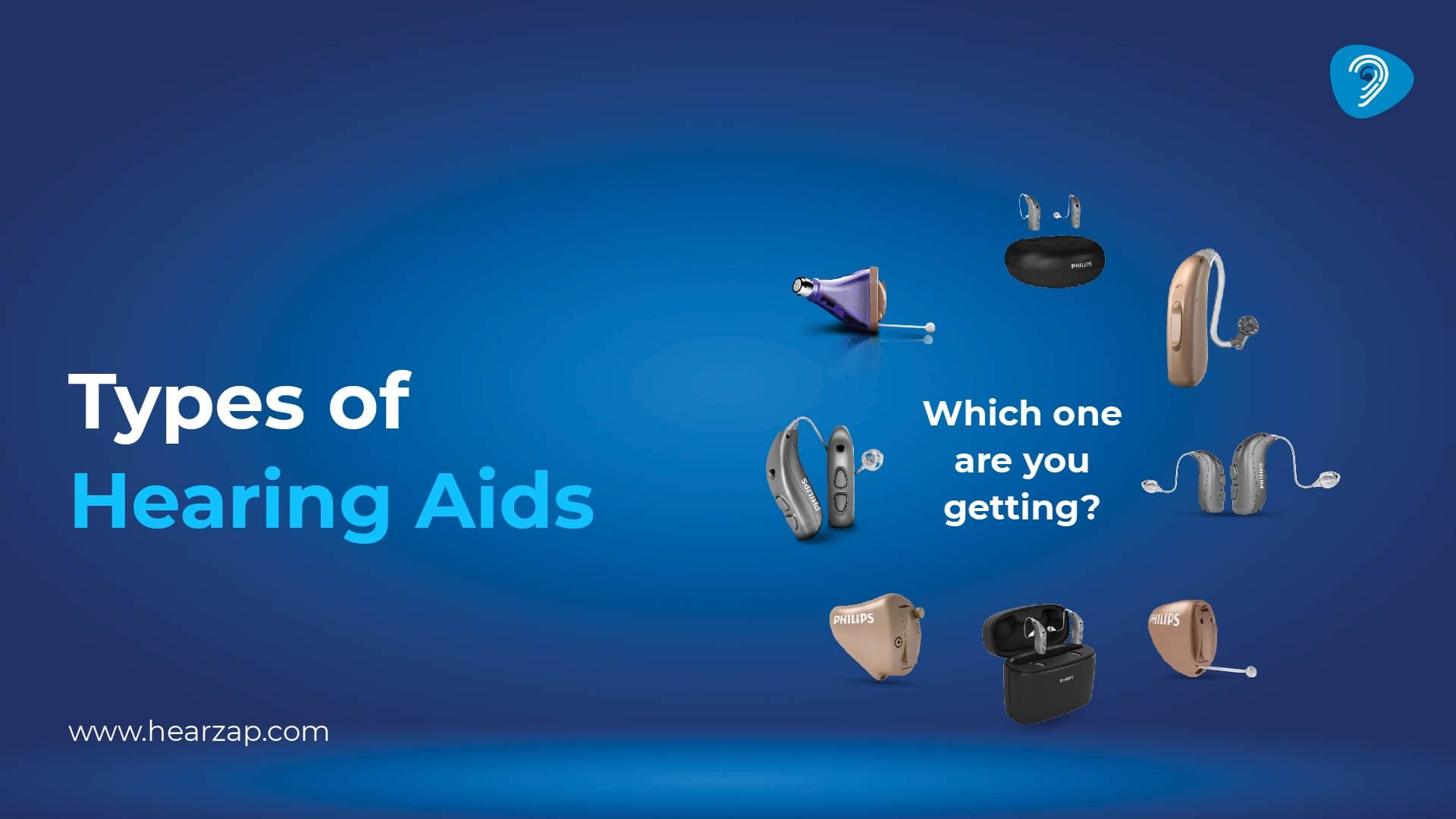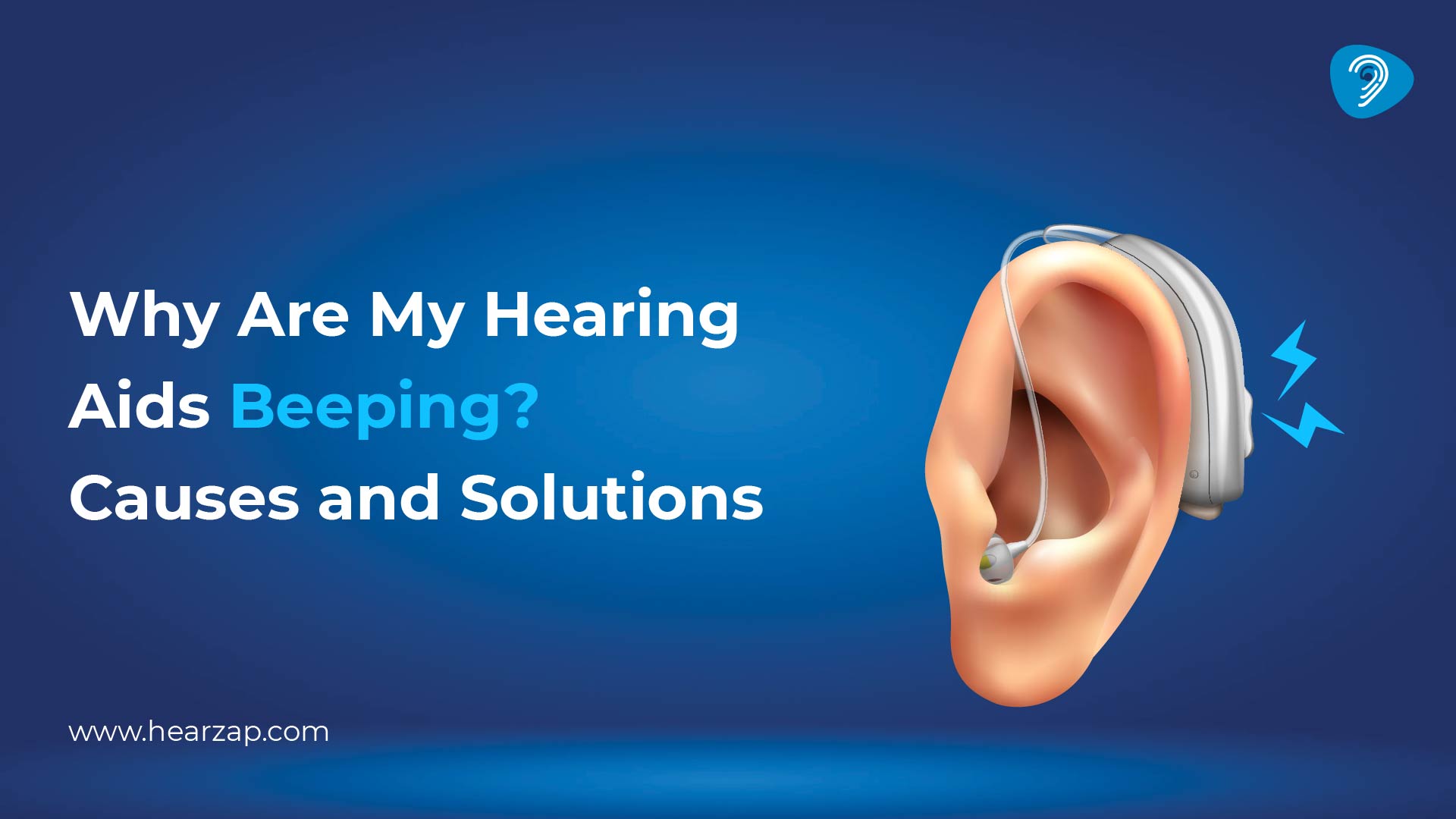HEARING AIDS
Digital vs Traditional Hearing Aids: Which is Right for You?
By Team Hearzap | Oct. 21, 2025

Choosing hearing support is personal. What matters most is how clearly you can follow conversations, enjoy music, and feel confident. This guide compares digital hearing aids vs analogue so you can match features, comfort, and budget with your needs. You’ll also learn how a hearing test and a trial help you judge value when shortlisting hearing aids.
What Are Traditional (Analog) Hearing Aids?
Traditional units use continuous analog amplification. Incoming sound is converted to electrical signals and boosted as a smooth waveform, then delivered through the receiver to your ear. Think of a single volume knob that raises everything - speech, wind, traffic - together. Many people appreciate the straightforward feel with minimal features and predictable behaviour.
Analogue devices can be set by a clinician to match your audiogram, and some include multiple programs for quiet rooms, outdoors, or music. But because processing is linear, fine-tuning to specific frequencies and environments is limited. If you move from a calm lounge to a bustling café, you may need to adjust volume manually.
What Are Digital Hearing Aids?
Digital devices convert sound into numerical data. A tiny computer analyses frequencies, then applies targeted gain, noise reduction, and feedback control before turning the signal back into sound. Instead of one broad volume change, digital processing can shape thousands of bands with precision. That precision supports features such as directionality (focusing on a voice in front of you), automatic program switching, and wireless connectivity.
Because digital hardware runs software, updates and remote adjustments are often possible. Your audiologist can fine-tune profiles for work meetings, busy streets, or home TV. Many models pair with phones for call streaming and hands-free control. If you’re considering an online hearing test as an early screening step, digital platforms can later use your in-centre audiograph report to personalise settings further. The experience tends to be more “set and forget,” although the app controls are there when you want manual control.
Digital Hearing Aids vs Analog: Key Differences
Here are a few everyday differences people notice. These can vary depending on the brand and how well the hearing aid fits, so take them as general guidance, not a final answer. Many people compare analog and digital hearing aids. The points below explain why the right choice depends on your needs.
Sound Quality and Clarity
- Digital processors separate speech from background patterns, then apply gain selectively. This can make voices easier to follow at a café or train station.
- Analogue amplifies everything more evenly. Some listeners describe the sound as warm or natural for music, but busy spaces can feel louder overall.
- Feedback management is generally stronger in digital units because algorithms detect and suppress whistling quickly.
Features and Technology
- Digital models commonly include Bluetooth streaming, rechargeable batteries, and remote support. Apps allow quick, discreet adjustments.
- Analogue models focus on essential amplification with physical controls. If you value a no-fuss device that behaves the same everywhere, that simplicity can be appealing.
Cost and Affordability
- Entry prices vary by region and service package. Digital devices span basic to premium tiers, with higher costs for automation and noise handling.
- Analogue options can be less expensive when available, though choice may be limited in some clinics due to the industry’s shift toward digital.
- When comparing quotes, look beyond hardware: fittings, follow-ups, and warranty terms make a meaningful difference to long-term value.
Comfort and User Experience
- Shell size depends on battery type, receiver power, and your ear canal. Both formats come in behind-the-ear and in-ear styles.
- Rechargeables reduce the handling of tiny cells. Most rechargeable options are digital.
- People with dexterity concerns may prefer bigger buttons and fewer menus; that often points to simple analogue units or streamlined digital ones with locked programs.
- Try devices in real life for a week or two. Note listening ease at home, outdoors, and on calls. Small comfort details become obvious only after daily wear.
Pros and Cons: Digital vs Analog Hearing Aids
Digital advantages
- Adaptive noise reduction and feedback control can make conversation smoother in changing environments.
- App control, streaming, and telecare support convenience for work and family life.
- Fine-grained frequency shaping helps match complex hearing loss patterns.
Digital considerations
- More features can mean a learning curve. You may spend time choosing programs or managing Bluetooth.
- Higher tiers cost more; check what you truly need versus what is nice to have.
Analog advantages
- Straightforward amplification with simple controls suits users who dislike apps.
- Some listeners enjoy the analogue “warmth,” especially for live music or instruments.
Analog considerations
- Less precise fitting for complex audiograms and fewer options for noisy settings.
- Limited availability in certain markets and fewer rechargeable choices.
In everyday conversation, people compare digital vs analog hearing aids and even ask, are digital hearing aids better than analog? The honest answer is: it depends on your lifestyle, listening goals, and how well the devices are fitted for you.
Which Type of Hearing Aid Should You Choose?
Start by thinking about your daily challenges, not the device itself.
Ask yourself, where do you struggle most? Is it in meetings, family dinners, classrooms, phone calls, or while watching TV? Once you know that, choose a hearing aid that suits those situations best.
When a Digital Hearing Aid Makes Sense
- You move between quiet and noisy places often.
- You want clearer speech in groups or while traveling.
- You like hands-free calls and audio streaming.
- You prefer a device that adjusts automatically after setup.
When an Analogue Hearing Aid Can Work Well
- Your listening environments are usually the same.
- You prefer simple controls and fewer settings.
- You’re on a budget or open to pre-owned models.
- You value natural sound for music and manual control.
What to Do Before Buying
- Get a full hearing test from an audiologist to understand your hearing levels.
- Share your daily routine like commute noise, office setup, or outdoor activities—so the expert can suggest the right fit.
- Try at least two devices and note how they feel in real situations (clarity, comfort, and fatigue).
- Plan follow-ups small adjustments early on can make a big difference.
Remember, a good fit matters more than a spec sheet. Well-programmed digital devices can help. Well-chosen analogue devices keep things straightforward. The most “right” choice is the one you’ll wear all day without thinking about it.
Conclusion: Finding the Right Fit for Better Hearing
Hearing support isn’t one-size-fits-all. I’ve found that digital tools offer automation, personalisation, and connectivity that can be really helpful in today’s busy soundscapes. Analogue tools, on the other hand, keep things simple and predictable perfect if I just want essential amplification without all the extras. Whatever route I choose, I make sure to set clear goals, get a proper fitting, and test things out in real-world situations. When I first started, I took an online hearing test to see if I needed a clinic visit next. Hearzap made that process easy with its quick screening tools, expert consultations, and personalised device recommendations. From there, my clinician helped me explore the best options to try.
FAQs
What is the 5 minute rule for hearing aids?
It’s a practical habit: when you insert your devices, give yourself about five minutes to settle. During this time, your brain adapts to amplified sounds, and you can check comfort, feedback, and initial volume before heading out. If anything feels off, make small adjustments or note issues to discuss at your next fitting.
Which is better, analog or digital hearing aids?
“Better” depends on your needs. Digital units usually offer adaptive noise handling, streaming, and fine-tuning; analogue units keep controls simple and predictable. Try both if possible and judge by clarity, comfort, and ease across your typical day.
How long does it take to get used to new devices?
Many wearers feel meaningful improvement within a couple of weeks, with further gains over one to three months as fittings are refined. Wearing them consistently and attending follow-ups speeds the process.
Do I need two devices or just one?
If you have hearing loss in both ears, two devices help with localisation and balanced sound. Your clinician will advise after assessing your audiogram and lifestyle goals.
Are rechargeable options worth it?
They reduce the handling of small batteries and support all-day use for many wearers. Consider your daily hours of listening, travel routines, and access to charging when deciding.
Can I buy online without seeing a clinician?
An online purchase may suit simple needs, but in-person assessment and follow-up fine-tuning typically lead to better day-to-day results. Use online tools as a starting point, then seek personalised care.
Related Blogs

Best Hearing Aids in India

Types of Hearing Aids

Why Are My Hearing Aids Beeping? Causes and Solutions
Contact us
We are here for all your hearing needs, from hearing tests to hearing aids. Fill out the form below, and we will give you a call soon.
Please enter a valid mobile number with 10 digits.
Recent Blogs
By None | Dec. 9, 2025
By None | Dec. 8, 2025
By None | Dec. 4, 2025
By None | Dec. 2, 2025
By None | Nov. 28, 2025









